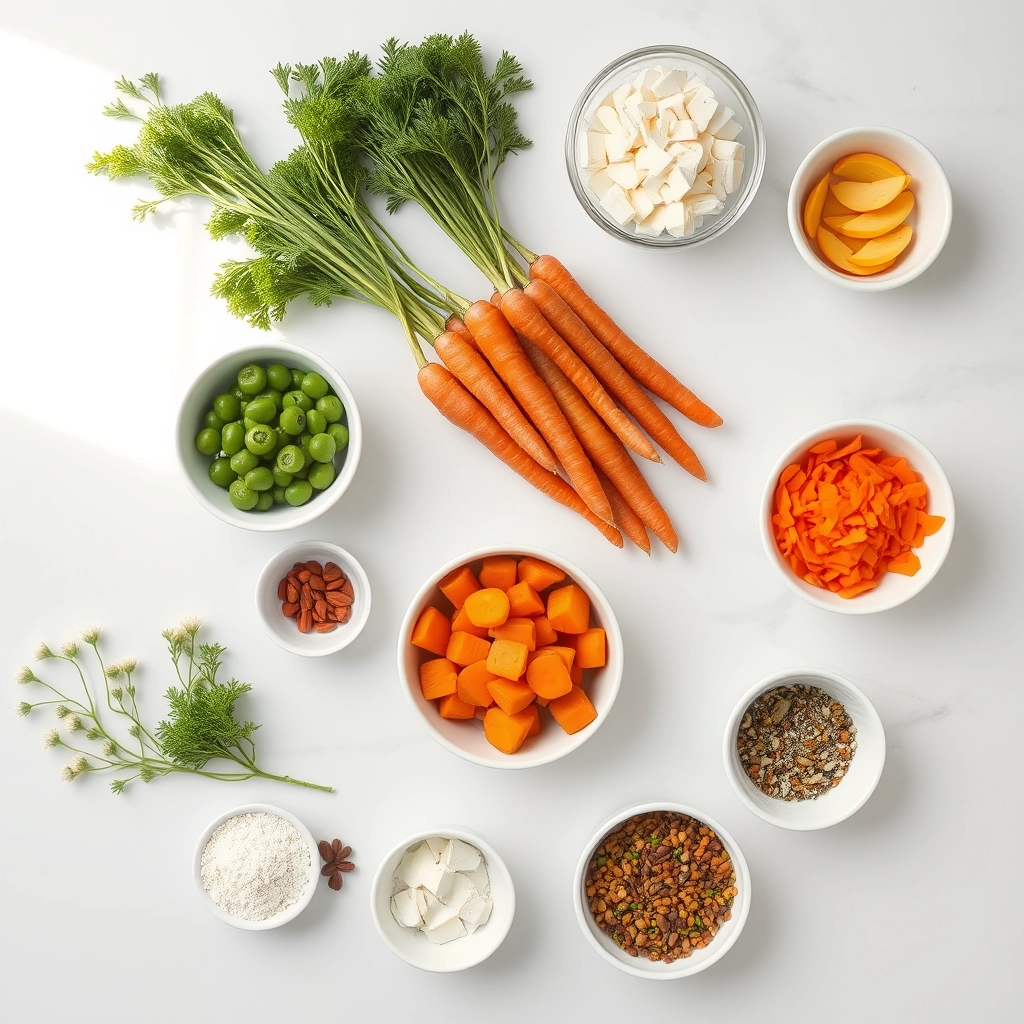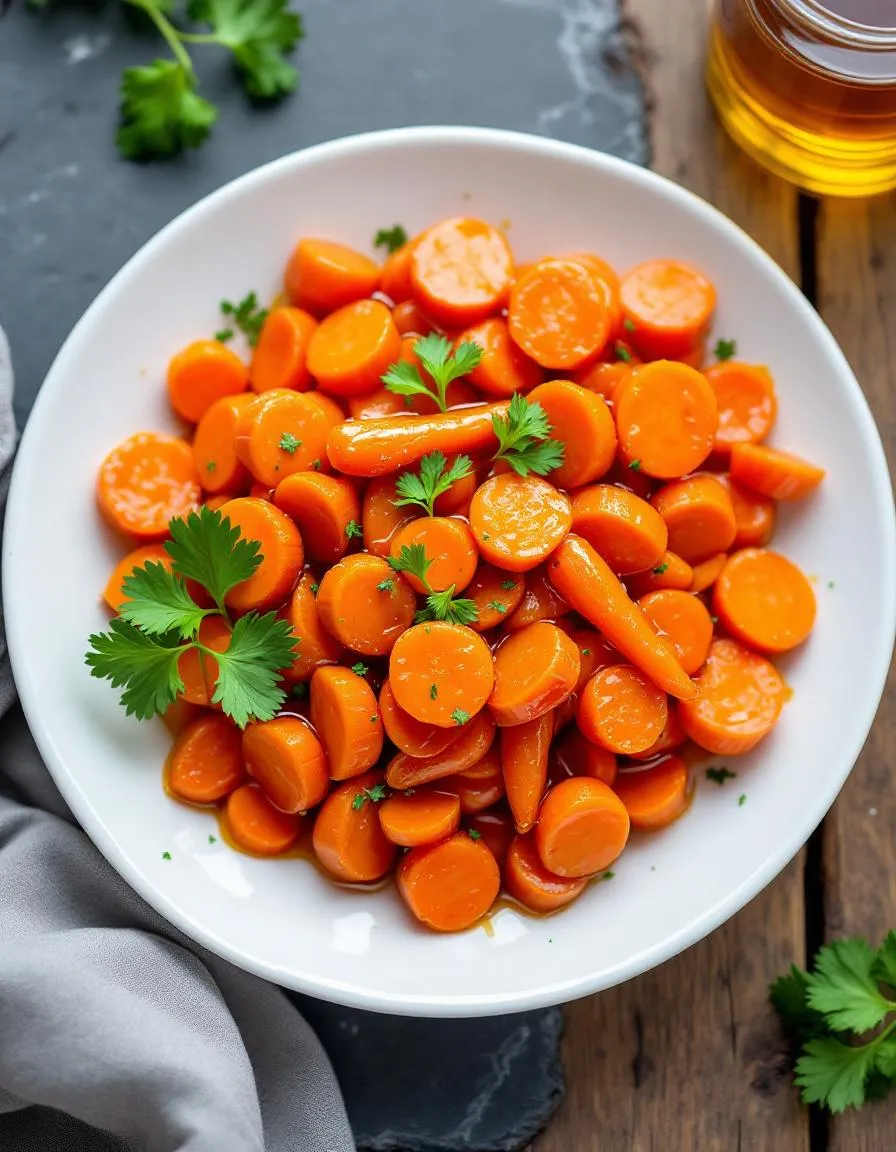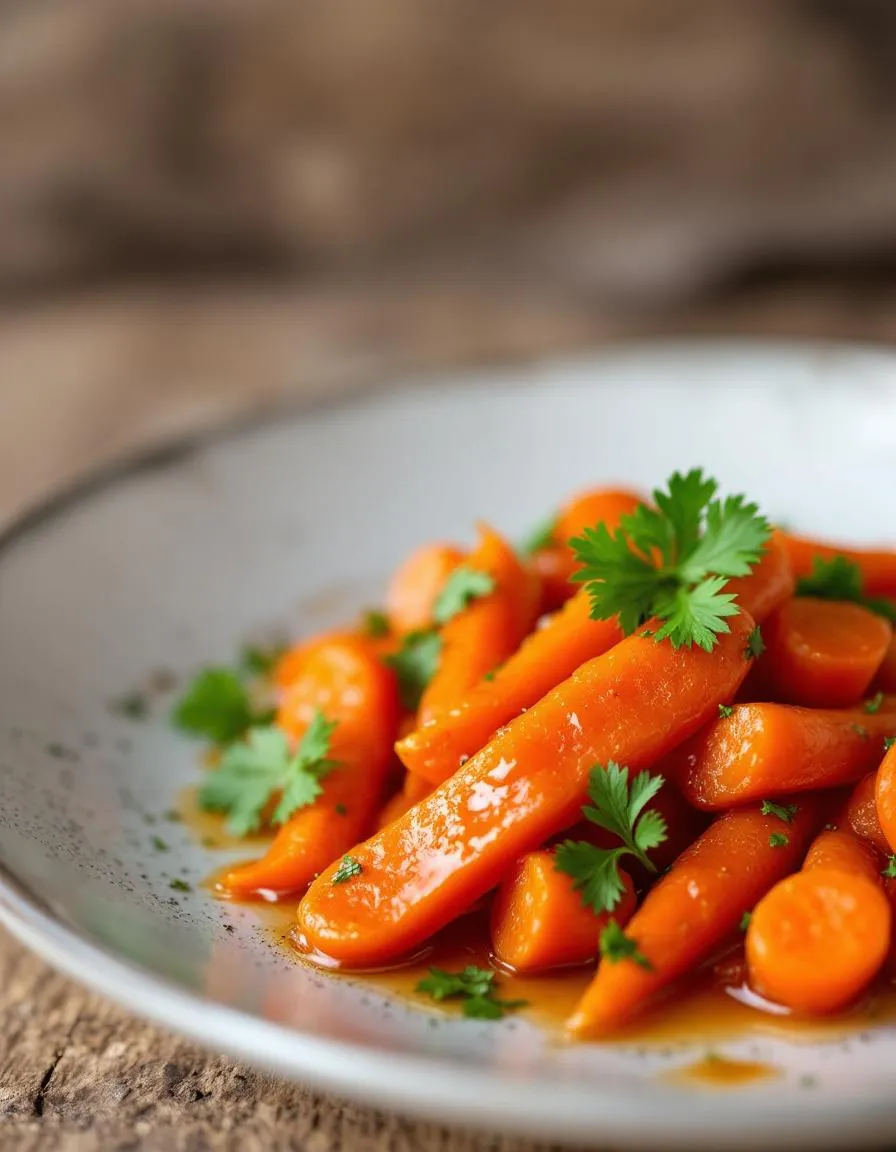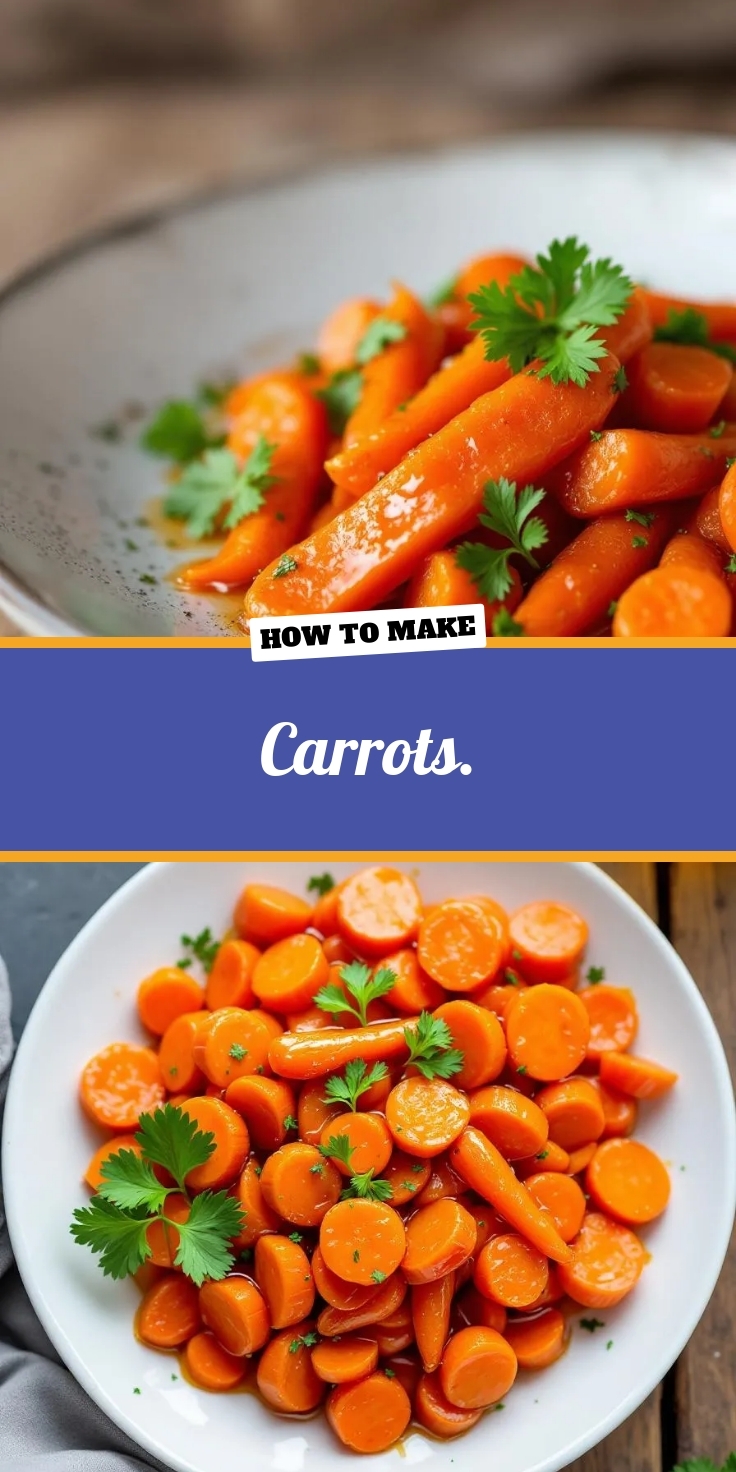Introduction
There’s something undeniably comforting about the humble carrot. Whether roasted to caramelized perfection, shredded into a vibrant salad, or blended into a velvety soup, carrots bring warmth and versatility to every dish. Plus, their natural sweetness makes them a hit with kids and adults alike. Today, we’re celebrating this underrated veggie with a recipe that’s as nourishing as it is delicious. If you’ve ever doubted the power of carrots to shine as the star of a meal, prepare to be amazed. After all, good food starts with simple, wholesome ingredients—and carrots deliver every time.
Carrots aren’t just a pantry staple; they’re a nutritional powerhouse packed with beta-carotene, fiber, and antioxidants. What’s more, their earthy sweetness balances savory and spicy flavors effortlessly, making them a favorite in cuisines worldwide. From classic glazed carrots to inventive twists like carrot cake overnight oats, this veggie adapts to any culinary mood. Here at BrekCakes, we love ingredients that multitask, and carrots fit the bill perfectly. They’re affordable, easy to prep, and endlessly adaptable—whether you’re whipping up a quick weeknight side or a showstopping dessert like our Carrot Cake Overnight Oats. And let’s not forget their role in savory dishes, like the cozy Roasted Carrot Soup that’s become a reader favorite. No matter how you slice them, carrots bring color, flavor, and nutrients to the table.
Why I Love This Recipe
Carrots remind me of my grandma’s kitchen, where she’d grate them into everything from muffins to stews, insisting they made meals “healthier and happier.” Her enthusiasm stuck with me, and now I love finding new ways to highlight their versatility. This recipe, in particular, captures the essence of what makes carrots special—their ability to transform into something unexpectedly delightful. Whether you’re a longtime carrot fan or just discovering their potential, I hope this dish becomes a staple in your home too.
Health and Nutrition
Why it’s good for your body
Carrots pack a powerful nutritional punch, making them a standout choice for boosting your health. First, they’re rich in beta-carotene, which your body converts into vitamin A. This nutrient supports sharp vision, strong immunity, and glowing skin. Additionally, carrots deliver a hearty dose of fiber, which keeps your digestion running smoothly and helps you feel full longer.
Beyond their vibrant color, carrots offer antioxidants like lutein and lycopene. These compounds fight free radicals, reducing inflammation and lowering the risk of chronic diseases. Moreover, carrots contain potassium, which helps regulate blood pressure and supports heart health. Whether you enjoy them raw, roasted, or blended into a soup, you’ll reap these benefits with every bite.
Another reason to love carrots is their low-calorie profile. They’re a smart snack for weight management, offering crunch and sweetness without excess calories. Plus, their natural sugars release slowly, preventing energy crashes. If you’re looking for a versatile veggie that fuels your body, carrots deserve a spot on your plate.
How it fits in a healthy lifestyle
Carrots effortlessly fit into nearly any eating plan, whether you’re gluten-free, vegan, or focused on heart health. Their natural sweetness satisfies cravings, making them a great alternative to processed snacks. Toss them into salads for extra crunch, or blend them into smoothies for a nutrient boost without overpowering flavors.
For those managing blood sugar, carrots have a low glycemic index, so they won’t cause spikes. Pair them with protein, like hummus or Greek yogurt, for a balanced snack. If you’re meal prepping, try our easy meal-prep guide to incorporate carrots into weekly lunches. They also shine in heart-healthy diets, thanks to their fiber and potassium content.
Busy families will love how kid-friendly carrots are. Sneak them into muffins or sauces, or serve them with dips for a fun twist. Need more veggie-packed ideas? Check out our family-friendly recipes for creative ways to keep everyone eating well. With so many uses, carrots make healthy eating simple and delicious.
PrintHoney Glazed Carrots
Description
Sweet and tender honey glazed carrots make a perfect side dish for any meal.
Ingredients
For the Crust:
- 1 lb carrots, peeled and sliced
- 2 tbsp butter
- 2 tbsp honey
- 1/2 tsp salt
- 1/4 tsp black pepper
- 1 tbsp fresh parsley, chopped
Instructions
1. Prepare the Crust:
- In a large skillet, melt butter over medium heat.
- Add sliced carrots, honey, salt, and black pepper. Stir to coat.
- Cover and cook for 15-20 minutes, stirring occasionally, until carrots are tender.
- Garnish with fresh parsley before serving.
Notes
You can customize the seasonings to taste.

How to Prepare This Dish
Steps and time-saving tips
Start by washing and peeling the carrots thoroughly to remove any dirt. Next, slice them into even rounds or sticks for uniform cooking. Meanwhile, heat a skillet over medium heat and add a drizzle of olive oil. Toss in the carrots and sauté them for about five minutes, stirring occasionally to prevent sticking. For extra flavor, sprinkle a pinch of salt and a dash of honey to caramelize them slightly. If you’re short on time, you can steam the carrots instead—just pop them in a microwave-safe dish with a splash of water and cover for three minutes. Once tender, toss them with fresh herbs like parsley or thyme for a bright finish. Alternatively, roast the carrots in a preheated oven at 400°F for 20 minutes to bring out their natural sweetness. Whichever method you choose, keep an eye on them to avoid overcooking. Finally, serve the carrots warm as a side or let them cool for a crisp salad addition.
Mistakes I’ve made and learned from
I used to overcrowd the pan when sautéing carrots, which made them steam instead of caramelize. Now, I cook them in batches for that perfect golden edge. Another blunder? Underseasoning. Carrots need a generous pinch of salt to shine, but I once skipped it and ended up with bland results. For more seasoning tips, check out my guide on balancing flavors. Also, I learned the hard way that cutting carrots unevenly leads to uneven cooking—some pieces turn mushy while others stay crunchy. A sharp knife and patience make all the difference. If you’re new to knife skills, my knife basics tutorial will help you slice like a pro. Trust me, these small adjustments transform humble carrots into a standout dish every time.

Cultural Connection and Variations
Where this recipe comes from
Carrots have a surprisingly rich history, tracing back thousands of years to Central Asia, where people first cultivated them for their aromatic leaves and seeds rather than their roots. Over time, farmers selectively bred them into the sweet, vibrant orange veggies we know today. In many cultures, carrots symbolize prosperity and good health. For example, during Jewish Rosh Hashanah, cooks often feature them in dishes like tzimmes, a sweet stew, to represent a hopeful and fruitful year ahead.
Around the world, carrots take on unique roles in local cuisines. In Morocco, they star in refreshing salads with citrus and spices, while in India, cooks grate them into gajar ka halwa, a decadent dessert simmered with milk and cardamom. Even in my own family, carrots play a starring role—my grandmother always added extra to her Sunday pot roast, claiming they made the gravy sweeter. Whether roasted, pickled, or raw, carrots adapt effortlessly to regional flavors and traditions.
How it fits in today’s cooking
Today, carrots remain a kitchen staple, thanks to their versatility and nutritional punch. Modern cooks toss them into sheet-pan dinners, blend them into smoothies, or even spiralize them for low-carb noodles. They’re also a star in seasonal cooking—think Easter glazed carrots or Thanksgiving carrot soufflé. For busy weeknights, many rely on quick recipes like one-pan meals where carrots add color and crunch without extra fuss.
Health-conscious eaters love carrots for their beta-carotene boost, while foodies appreciate their ability to elevate both sweet and savory dishes. From comfort food classics to trendy plant-based bowls, carrots bridge the gap between tradition and innovation. No matter how you slice them, they’re here to stay.
Taste and Texture
What makes it delicious
Carrots bring a vibrant sweetness with earthy undertones, making them a versatile star in any dish. When roasted, they caramelize into tender, almost buttery bites, while raw carrots offer a refreshing crunch. Their natural sugars intensify as they cook, creating a rich, slightly smoky aroma that fills the kitchen. Whether grated into a salad or blended into a soup, carrots add a satisfying texture—sometimes crisp, sometimes melt-in-your-mouth soft. A drizzle of honey or a sprinkle of thyme can elevate their flavor, but even on their own, carrots shine with a bright, wholesome taste.
Boosting the flavor
For a bolder twist, toss carrots with warming spices like cumin or smoked paprika before roasting. A splash of citrus, such as orange zest or lemon juice, brightens their sweetness, while a dollop of garlic herb yogurt sauce adds creamy contrast. If you love texture, try topping roasted carrots with crunchy toasted nuts or a sprinkle of crispy chickpeas. Experiment with glazes, too—a maple-mustard mix or balsamic reduction can transform humble carrots into a showstopping side.

Tips for Success
Best practices for results
For perfectly tender Carrots, always slice them evenly so they cook at the same rate. Additionally, roast them at a high temperature to caramelize the natural sugars and enhance their sweetness. If you prefer a softer texture, cover the pan with foil during the first half of cooking. Finally, toss the Carrots in oil just before roasting to prevent them from drying out.
Mistakes to avoid
Avoid overcrowding the pan, as this steams the Carrots instead of roasting them. For even browning, spread them in a single layer with space between each piece. Also, don’t skip seasoning—Carrots need a pinch of salt to balance their natural sweetness. If you’re unsure about timing, check out our guide on perfect roasting times for precise results. Another common mistake is using old or limp Carrots; fresher ones yield better texture and flavor, as explained in our vegetable selection tips.
Serving and Pairing Suggestions
How to serve this dish
For a vibrant presentation, arrange roasted carrots on a rustic wooden platter with fresh herbs like thyme or parsley. Alternatively, layer them over creamy hummus for a colorful appetizer. If you’re serving carrots at a holiday gathering, drizzle them with honey and sprinkle toasted nuts for extra texture. Bright orange carrots also make a stunning side dish for brunch when paired with fluffy scrambled eggs or avocado toast.
What goes well with it
Pair carrots with a tangy yogurt dip or tahini sauce to balance their natural sweetness. For a heartier meal, serve them alongside our herb-roasted chicken, as the savory flavors complement each other perfectly. Meanwhile, a crisp white wine or sparkling water with lemon enhances the freshness of carrots. If you’re craving something lighter, try our avocado quinoa salad for a nutritious and satisfying combination.

Yes, carrots are excellent for eye health because they contain beta-carotene, which your body converts into vitamin A. This nutrient helps prevent night blindness and supports overall vision. Including carrots in your diet can contribute to long-term eye health.
Fresh whole carrots can last 3-4 weeks in the fridge when stored properly in a plastic bag or airtight container. Cut or peeled carrots should be used within 2-3 weeks. For best results, keep carrots away from ethylene-producing fruits like apples.
Yes, carrots are safe and healthy for dogs when given in moderation. They make excellent low-calorie treats and provide vitamins A and K. Always cut carrots into bite-sized pieces to prevent choking, especially for small dogs.
Carrots may develop white blush due to dehydration or exposure to air, which is harmless and doesn’t affect taste. This natural process, called “carrot blush,” occurs when cut surfaces lose moisture. Simply peel or rinse the carrots before use.

